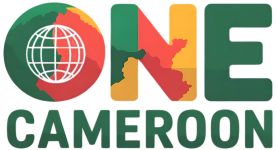Cameroon’s 402 km coastline supports numerous fishing communities whose livelihoods revolve around artisanal and small-scale commercial fishing. From coastal villages near Limbe to lagoon settlements around Douala, fish—especially bonga, mackerel, and tilapia—constitute staple protein for millions. Beyond sustenance, the fishing economy drives local trade, supports processing industries, and shapes cultural identities. Understanding these communities offers insight into the intersection of tradition, economy, and environmental challenges.
Artisanal fishing employs dugout canoes (pirogues) powered by small outboard engines or paddles. At first light, coastal fishermen launch from beaches in groups of five to ten, setting drift nets up to 200 m long. Nets crafted from monofilament lines trap schooling fish such as sardinella (locally “benga”) and mackerel. Nets are hauled into canoes, and the catch sorted on-site—smaller fish and juveniles discarded, while marketable sizes are preserved on ice blocks or smoked onshore. Women in coastal villages often operate smokehouses (“maquis”), transforming fish into kitozo (smoked fish) or boké (dried fish), extending shelf life and enabling distribution to inland markets like Yaoundé and Bamenda.
In mangrove creeks around Douala and Kribi, fishermen employ “gillnets” set overnight, targeting barracuda and seabream. The mangrove ecosystem, although threatened by deforestation, remains a vital nursery for juvenile fish. Fishermen navigate narrow channels in their pirogues, using poles to probe muddy waterways. Local knowledge dictates best fishing spots: cues such as bird congregations or sudden shifts in water temperature signal abundant fish shoals. Fishermen often work collectively—sharing profits equally—reinforcing communal bonds and risk mitigation.
Fish markets are vibrant economic hubs. At Mokolo Market (Yaoundé), wholesale traders transport fresh fish in insulated trucks from coastal landing sites daily. Secondary fish markets in Douala—such as Mokolo Douala and Bonabéri Relay Market—serve both local consumers and export buyers. Fishmongers wrap fillets in banana leaves or plastic bags, covering them with crushed ice. Prices fluctuate based on seasonality and fuel costs; during lean seasons, scarcity drives prices up, affecting low-income households’ nutrition. Efforts by the Ministry of Livestock, Fisheries, and Animal Industries (MINEPIA) to promote freshwater fish farming help stabilize supply.
Aquaculture is on the rise. Farmed tilapia, pangasius catfish, and Nile perch are cultivated in earthen ponds near Mbanga and Garoua. Private investors partner with extension services to train local entrepreneurs in pond management—feeding regimes, aeration, and disease control. Cage-culture experiments in Nkole Lake (North Region) test feasibility for Tilapia nilotica, reducing pressure on wild stocks. Most aquaculture products are sold fresh to local markets; some small-scale processors produce smoked tilapia fillets packed for regional supermarkets.
Fishing communities have rich cultural traditions. In Limbe, festivals like “Fishermen’s Day” (observed unofficially around June) celebrate the start of the fishing season. Fishermen decorate their pirogues with brightly colored paint—blue for protection and red for prosperity. A blessing ceremony led by village elders involves libations poured into the sea—sorghum beer mixed with palm oil—accompanied by drumming and singing. Women, dressed in printed wrappers and headscarves, prepare large communal meals: fish stewed in ‘ndolé’ leaves served with cassava fufu. Youngsters practice “stones-on-water” games on the beach, mimicking net-casting gestures to honor ancestors’ fishing techniques.
Challenges confront these communities: overfishing, coastal erosion, and pollution. Industrial trawlers encroach into artisanal fishing zones, often deploying bottom trawls that destroy benthic habitats—seagrass beds and coral outcrops essential for juvenile fish. Local NGOs such as the Association to Protect the Environment and Coastal Resources (AIDER) advocate for “no-take” zones and stricter enforcement of fishing regulations. They organize workshops teaching responsible net-sizing (to avoid catching juveniles) and seasonal fishing bans to allow stock regeneration.
Climate change’s impacts—rising sea levels and altered rainfall patterns—affect migration and spawning cycles. In the Far North, Lake Chad’s shrinkage since the 1960s has displaced fishing communities, forcing migrations to coastal areas. Some displaced fishermen become street vendors in urban centers, selling fish by trays at intersections. The government’s National Environmental Management Plan (PNDRE) facilitates resettlement programs: constructing fish landing sites (“jetées”) with concrete piers and cold-storage facilities—enabling better post-harvest preservation and reducing spoilage.
Women play pivotal roles beyond processing. They manage cooperatives that pool resources to purchase ice-making machines and cold rooms—aggregating fish from multiple fishing camps and negotiating higher prices with wholesalers. These cooperatives also run microcredit schemes: members contribute small savings, later borrowing to buy motorized pirogue engines or purchase rice during lean seasons. In many coastal villages, women elect “cooperative mothers” who mediate disputes, coordinate market deliveries, and organize training sessions on hygiene standards—key to preventing fish-borne diseases.
Local fisheries departments train fishermen in navigational safety—use of GPS devices—and first aid. Occasionally, international agencies like FAO provide assistance: distributing fiberglass canoes that resist rot and reduce maintenance costs. Some fishing camps adopt eco-friendly “tiger traps” (circular weirs) to catch fish without damaging seagrass beds. Community radio stations broadcast daily catch prices and weather forecasts, enabling fishermen to adjust departure times and avoid storms.
Tourism intersects with fishing traditions. Visitors to Kribi can book day trips with fishermen—boarding pirogues at sunrise, learning to cast nets, and sharing meals prepared from that day’s catch. Guests often try “n’takban,” a spicy pepper sauce served with grilled fish. Tourist lodges along the coast host cultural nights featuring fish-cooking demonstrations: how to prepare “Ekwang” (grated cocoyam wrapped in cocoyam leaves) served with fish broth. Proceeds from tourist visits support community schools and health clinics—ensuring benefits extend beyond individual households.
Cameroon’s fishing communities stand at a crossroads: balancing age-old traditions with environmental conservation and economic development. By strengthening cooperative structures, promoting sustainable fishing practices, and integrating eco-tourism, these communities can safeguard both their cultural heritage and livelihoods—ensuring that future generations can continue hauling nets off Cameroon’s bountiful shores.









